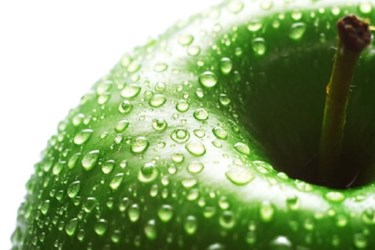Electrically-Charged Water May Provide A Green Alternative In Combatting Foodborne Pathogens
By Melissa Lind, contributing writer

A recent study conducted at Harvard University shows that “Engineered Water Nanostructures,” or water that is electrically charged, can destroy foodborne pathogens. This process may provide an alternative to the use of disinfectant materials in the food industry.
Researchers at Harvard University recently published study results in Environmental Science and Technology examining the use of electrically charged nanodroplets of water in the inactivation of common foodborne pathogens such as E. coli, Listeria and Salmonella. The study results show that depending on the surface type or location of food contamination, the duration of exposure, and the specific pathogen, charged water droplets could potentially eliminate up to 98 percent of common bacteria on produce.
The process of electrically-charging works by spraying aerosolized through an electrical field. This results in droplets of water that are 25 nanometers in size and contain an electrical charge. In comparison, droplets of water commonly present in fog are 1 micron in diameter — 40 times larger than droplets produced with this method. Fruit or vegetables are then sprayed with the charged water and left to sit for a period of time. The more electricity that has been applied to the water, the less likely that the water droplets will evaporate due to changes in surface tension. However, surfaces must be coated for a significant period of time. Due to the electrical charge, bacterial cell membranes are destroyed, rendering the pathogen unviable and harmless.
Some retail outlets had previously investigated the use of electrically charged water, but no widespread method, or larger-scale use, has been adopted and efforts were largely based on anecdotal reports. Researchers believe if the process can be improved, electrically-charged water may be a green alternative to current disinfection methods, such as the application of bleach, peroxide, or other chemical-based cleaners. The charged water also had no adverse effects of taste or other changes to treated produce.
The study results show that eventual use may be possible on an industrial scale if the technology can come up to the 99.999 percent elimination requirements for pathogen contamination in the food industry. Future development of the process will also need to reduce the amount of time surfaces or food must be exposed to the charged water for the process to work. However, this may eventually offer a significant advantage in terms of sustainability.
